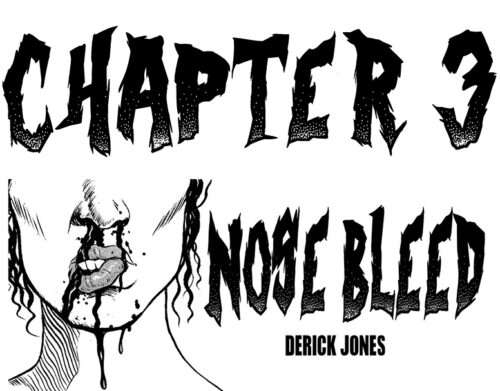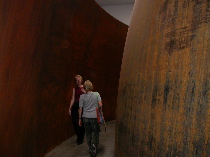
Even before we got inside Gagosian to see Richard Serra’s new canyons of steel, I could tell this gallery experience was going to be different. For starters, the crowd seemed atypical for a trendy gallery — a mix of moms, babies, grandmoms, business types and students like you might encounter in Central Park on a nice day.
Then again, the work — huge, curvy, earthy and (in one case, labyrinthine) — seemed like an indoor natural wonder. (pictures above and below) 
In fact whether walking “Blindspot’s” inward-curving spiral or being hit with the late afternoon sun pouring through the gallery’s west windows it was possible to forget you were in a commercial space devoted to the selling and buying of art.
I loved these pieces for their big, bold beauty and for the way they attracted such a diverse audience. I also loved the way they dominated the viewers and the space yet didn’t feel oppressive.
But when all is said and done I have to wonder about the value of art this big and this expensive.
The Serras didn’t move me on a human level or make me think deep thoughts about creation, the past or the future. They gave me a hit of something big and left me with the question of how they were made and for whom. I suppose work of this scale is for corporate collections or museums that can afford it. I’m glad I saw it but I can’t say I’ll remember the experience the way I remember seeing Michelangelo’s David (another indoor art wonder) or even something natural like the Rocky Mountains.
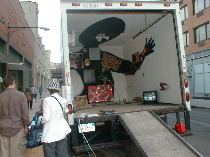 Meanwhile, no sooner had we left Gagosian than we ran into the smallest gallery in town, Rider Gallery in the Ryder truck. (picture right) I wasn’t really tempted to run up the ramp into the cramped cubbyhole and look at the 20-person group show but I applaud the gallery’s feisty alternative approach to business. The truck moves from location to location around town. Check their website for the schedule.
Meanwhile, no sooner had we left Gagosian than we ran into the smallest gallery in town, Rider Gallery in the Ryder truck. (picture right) I wasn’t really tempted to run up the ramp into the cramped cubbyhole and look at the 20-person group show but I applaud the gallery’s feisty alternative approach to business. The truck moves from location to location around town. Check their website for the schedule.
All day we seemed to run into art that inserted itself into a relationship with the viewer’s body. Serra’s canyons did it and so did Kevin Zucker’s paintings at Mary Boone (see Libby’s post below). 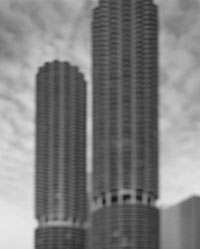
Then there were art objects that created a relationship with the viewer’s memory — like Hiroshi Sugimoto’s soft and fuzzy photographs of the world’s architectural wonders — from the Eiffel Tower to the Gehry Bilbao at Sonnabend. (image left is Sugimoto’s “Marina City”)
Or the more abject color photos of David Robbins at Feature which showcased discarded objects left for curbside pickup in his Milwaukee neighborhood. (right below) Both shows threw you into a relationship with the work that relied on your own memories — and on some kind of collective, romantic memory of past glories and failures. I found both bodies of work poignant.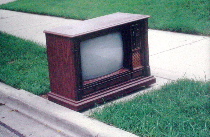
Finally, ending on the upbeat and affordable, I picked up a brochure for the Affordable Art Fair coming Oct 30-Nov.2 to Pier 92. Margaret Thatcher Projects will be there if you need a reason to go. Three Philadelphia galleries are also listed, Rodger LaPelle, Pentimenti and F.A.N. With a cost of $10 at the door, this might be a fun alternative to the Chelsea crawl.







